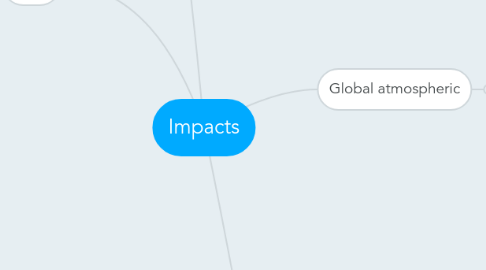
1. Local
1.1. Table from IPCC shows emissions higher for take off and landing leading to local pollution issues
1.2. Constrain development
1.2.1. eg LHR 3rd runway
1.2.2. Manchester a/p was last full runway built in UK
1.2.2.1. planned 1991 and opened 2001
1.3. Health issues
1.3.1. nox leads to respiration issues
1.3.2. nox also causes smog
1.3.2.1. leads to more respiration issues
1.3.3. so2 big player here too
1.3.4. PM10 and PM2.5
1.3.4.1. cardiovascular issues
1.3.4.2. respiration issues
1.3.4.3. asthma
1.3.4.4. direct link to mortality
1.3.5. co exasperates respiratory issues
1.3.6. noise
1.3.6.1. sleep deprivation
1.3.6.2. mental health issues
1.4. Loss of habitat and valued landscapes
1.4.1. nox causes acid rain and the acid is absorbed by vegetation causing stunted growth
1.5. Regulation
1.5.1. noise
1.5.1.1. STN
1.5.1.1.1. goes from international european national local
1.5.1.2. EU END
1.5.1.2.1. environmental noise directive
1.5.1.2.2. avoid prevent reduce
1.5.1.2.3. requires monitoring and reporting to the EC
1.5.1.2.4. requires a/ps have NAP
1.6. Intragenerational equity
1.6.1. (primary aim of sustainable development)
2. Nationally the issue is climate but locally the issue is noise
3. Socio-economic
3.1. links to tripartite model
3.1.1. all 3 legs need balanced
3.1.1.1. main a=balance argument tends to be economic vs environmental
3.1.1.1.1. economic impacts are comparatively easier to measure and quantify than social and environmental
3.2. aviation and travel has benefits
3.2.1. moved 3.3 billion people
3.2.2. $2.7 trillion in global economic impact
3.2.2.1. ATAG, 2014
3.2.2.2. UK impact = £52 billion
3.2.2.2.1. Oxford Economics, 2014
3.2.2.3. comes from
3.2.2.3.1. direct
3.2.2.3.2. indirect
3.2.2.3.3. induced
3.2.2.3.4. tourism catalytic
3.2.3. employs 9.9 million people directly
3.2.3.1. ATAG, 2014
3.2.3.2. changing due to technology and automation
3.2.4. social benefits
3.2.4.1. link to impacts of av to remote regions
3.2.4.1.1. eg Islay a/p
3.2.4.2. usually intangible
4. Global atmospheric
4.1. Cruise phase of flight
4.2. Greenhouse effect
4.2.1. Greenhouse gases: -Water vapor - 36-70% -CO2 - 2-26% -Methane - 4-9% -Ozone - 3-7% -CFC/HFCs
4.2.1.1. CO2
4.2.1.1.1. High quantity of emissions and long atmospheric life
4.2.1.1.2. well mixed in atmosphere
4.2.1.1.3. aviation co2 emissions 2015 = 781 million tonnes
4.2.1.2. NOx
4.2.1.2.1. catalytic production of tropospheric o3
4.2.1.2.2. BUT destroys CH4
4.2.1.3. H2O
4.2.1.3.1. troposphere
4.2.1.3.2. stratosphere
4.2.1.4. SO2
4.2.1.4.1. small impact on climate from absorption and scattering of solar radiation
4.2.1.4.2. can act as cloud formation nuclei
4.2.1.4.3. acid rain
4.2.1.5. Contrails
4.2.1.5.1. reflect solar radiation
4.2.1.5.2. absorb infrared radiation
4.2.1.5.3. can form cirrus clouds
4.2.2. Sources of gases
4.2.2.1. Natural
4.2.2.1.1. permafrost
4.2.2.1.2. organic beings
4.2.2.1.3. respiration
4.2.2.1.4. burning
4.2.2.1.5. H2O cycle
4.2.2.2. Man made (anthropogenic)
4.2.2.2.1. CFC/HFCs
4.2.2.2.2. energy production
4.2.2.2.3. burning fossil fuels
4.2.2.2.4. land fill sites
4.2.2.2.5. land use change eg from forest to construction site
4.3. Affect on aviation
4.3.1. sea level rise
4.3.1.1. 12 major US a/ps at risk
4.3.1.1.1. eg LGA, DCA, HNL and JFK
4.3.2. extreme weather
4.3.2.1. Hurricane Sandy 2012
4.3.2.2. Snowmagedon 2016
4.3.2.3. biggest cause of delay now
4.3.2.3.1. rerouting and holding to avoid weather is commercial loss but also increases fuel burn
4.3.3. jet stream
4.3.3.1. less reliable
4.3.4. changing tourism
4.3.4.1. Baltics are now being new summer destinations
4.3.4.2. issues with coastal regions
4.3.4.3. Barrios, 2015

